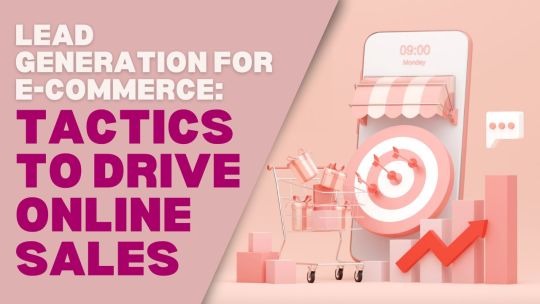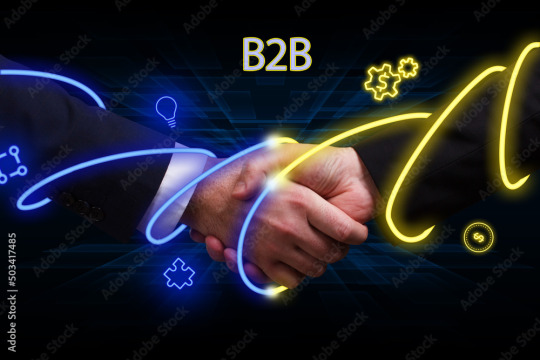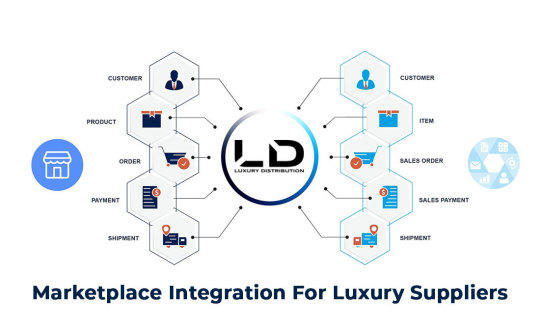#B2B marketplace integration
Explore tagged Tumblr posts
Text
Why Marketplace Integration for Luxury Suppliers is Essential: A Look at Luxury Distribution
In the modern business landscape, the luxury goods market continues to thrive, with consumers demanding high-quality products and exceptional service. However, as the competition intensifies, luxury suppliers must adapt to evolving market trends and leverage new technologies to stay ahead. One of the most effective ways for luxury suppliers to achieve this is through marketplace integration. By partnering with platforms that facilitate seamless online transactions, suppliers like Luxury Distribution can streamline their operations, expand their reach, and enhance their customer experience.
The Importance of Marketplace Integration
Marketplace integration offers luxury suppliers the ability to connect with a global audience through established online platforms. These platforms serve as a hub where businesses can showcase their products to a broader customer base, benefiting from the marketplace’s credibility and infrastructure. For a supplier like Luxury Distribution, integrating with marketplaces provides an efficient way to reach consumers who may not have been aware of their offerings otherwise.

By utilizing marketplace integration for luxury suppliers, Luxury Distribution can streamline inventory management, order fulfillment, and payment processing, allowing them to focus more on their core business activities. This level of efficiency is essential in the luxury sector, where precision, reliability, and consistency are key to maintaining brand reputation.
Expanding Reach and Building Brand Recognition
One of the key advantages of marketplace integration for luxury suppliers is the ability to tap into new markets. As the luxury goods market becomes increasingly digital, connecting with a global audience is critical. Marketplaces like Amazon, Farfetch, or luxury-focused platforms provide access to an international customer base, which can significantly increase visibility and drive sales for suppliers like Luxury Distribution.
Moreover, integrating with these platforms helps luxury suppliers build brand recognition. By positioning products alongside other prestigious brands on these marketplaces, suppliers can gain credibility and prestige by association. This is particularly important in the luxury sector, where consumers often make purchasing decisions based on a brand’s perceived status and reputation.
Enhancing Customer Experience and Satisfaction
Marketplace integration does more than just expand reach; it also helps improve the overall customer experience. For luxury suppliers, customer satisfaction is paramount. Consumers of luxury goods expect a seamless shopping experience, from browsing products to receiving their items in perfect condition.
Conclusion: Unlocking Potential with Marketplace Integration
In today’s digital-first world, marketplace integration for luxury suppliers like Luxury Distribution is no longer optional—it's essential for staying competitive. By leveraging the power of established marketplaces, luxury suppliers can expand their reach, enhance customer satisfaction, and streamline their operations. For Luxury Distribution, embracing marketplace integration opens the door to new opportunities, greater visibility, and improved efficiency, ultimately leading to higher sales and a stronger brand presence. As the luxury market continues to evolve, suppliers who prioritize marketplace integration will be well-positioned to meet the demands of a growing and dynamic consumer base.
#marketplace integration for luxury suppliers#luxury marketplace solutions#e commerce integration for luxury brands#luxury product distribution platforms#b2b marketplace integration#luxury brand digital transformation#luxury suppliers e commerce platforms#integration with luxury marketplaces#luxury brand online marketplace#supply chain integration for luxury suppliers#marketplace solutions for premium brands
0 notes
Text
Woxro: The Bright Head in the Lead of Ecommerce Development
Woxro is one of the highest level e-commerce development companies in the constantly changing digital economy. Woxro assures cutting-edge solutions for businesses with the sophisticated requirement of today's digital economy. Whether it's about B2B and B2C platforms or the most seamless integration, or simply a custom-built solution, the online business experiences get ignited through Woxro's services. Backed with the attitude of innovation and commitment towards making their clients successful, Woxro helps companies make strong digital platforms along with competitive markets. Check out these are the core e-commerce development services by which Woxro comes forward to be a preferred partner for businesses wanting to breathe new life into their online presence. Woxro is the leading ecommerce development company in India and is providing top notch services and solutions for you.

B2B Platform Development
The B2B interaction is at the heart of modern commerce; it has built B2B platforms that make such interactions easy and hassle-free. B2B marketplaces help a company reach its suppliers, shortlist potential partnerships, and make the transactions all from one centralized place. Woxro's B2B platforms are wide-ranging and ensure that customers experience security, reliability, and ease of use in all business operations in order to create confidence and efficient workflows. Woxro's B2B solutions are equipped with real-time inventory management, automated processes, and advanced analytics, meaning businesses can work efficiently and have valuable relationships that last long.
B2C Platform Development
Through ease-of-use, online shops to offer products for shopping, Woxro's B2C platform development services help businesses reach their customers and interact directly with them. Designed to convert visitors into loyal customers, Woxro's B2C platforms include all the comprehensive tools for managing products, processing secure payments, and engaging in more personalized experiences for shopping. Each is optimized to give an easy, enjoyable experience to the user as businesses stretch their reach to the customer, marketing being directed, and giving an enjoyable shopping experience that creates a sale and brand loyalty.

Platform Migration
Moving out from the outdated systems to modern scalable platforms often marks the beginning for businesses that want to remain competitive. Woxro professionals successfully migrate complexly numerous business operations from less than the minimum level of disruption. Woxro takes cautious control of data migration, system configuration, and testing processes while making the move to become more distant in terms of on-premise systems to cloud infrastructure, updating legacy technology, or changing platforms. When businesses engage with Woxro, they embrace the latest technologies, realize cost savings on operations, and boost the performance of the system with business continuity and efficiency intact.
Custom-Designed Platform Development
Woxro realises that every business is unique and has custom platform development services that provide bespoke solutions for a specific goal or workflow in place. These platforms are off-the-shelf by definition, designed from the ground up to meet a precise business need. Woxro's custom solutions are scalable and adaptive, allowing businesses to implement proprietary features, streamline workflows, and maximize flexibility. About Woxro's customization innovation integration: It ensures that the platforms continue to grow with the business and, thus, become an excellent basis for long-term growth as well as a competitive edge in the market.
CMS Integration
The integration of a content management system with your e-commerce platform has vast benefits within the operation, ranging from effective product management to advanced SEO capabilities. Woxro's content management system integration services enable businesses to access a single, easy-to-use interface for managing product descriptions, optimizing search content for better search engine rankings, and personalising shopping experiences. CMS integration, therefore, promotes ease of updates while bringing increased online visibility and engagement from customers. CMS integration helps companies create more engaging and dynamic experiences that talk to customers to convert them.
API Integration
API integration is a necessary concept for e-commerce platforms in an interlinked digital world, integrating with third-party applications, payment systems, and other services. Woxro's API integration services provide smoother interoperability between different software applications for easy information sharing and add-on features. Of course, payment gateway, CRM system, and APIs all resolve issues because their performance can grow without getting disconcerting of existing operations, Woxro ensures that. API integration makes the overall functionality and responsiveness of e-commerce platforms robust, flexible, and scalable enough to expand on further expectations.
Why Woxro for ECommerce Development?
At Woxro, you will find industry expertise, innovative technology and, above all, a client-centric approach that seeks tailored solutions for each business. Ecommerce development with Woxro's services is done to cater for the unique needs of every client so as to ensure robust, scalable solutions adapting to changing market demands. Whether it is a B2B, B2C platform, handling platform migrations, or integration with CMS and APIs, Woxro connects with technical pools of expertise in alignment with strategic insight to yield results. Businesses partner with Woxro to achieve advanced tools and custom solutions in enforcing the new path forward through their digital success.

Conclusion
Woxro e-commerce development solutions give businesses the possibility of a powerful and agile web presence. The products offered by Woxro for creating B2C growth strengthen customer engagement, streamline B2B relations, smooth migrates, and unlock API and CMS integrations that facilitate business clients' digital transformation with the platform. Equipping businesses with solutions that solve the challenges of the digital age, creating future-proof, impact-generating e-commerce, to drive business growth and success-all of these Woxro does.
#ecommerce#ecommerce development agency#ecommerce development services#ecommerce development company#ecommerce website development#ecommerce developers#web developers#web development#web graphics#web resources#shopify#woocommerce#online store#smallbusiness#websitedevelopmentcompany#search engine optimization#web design#website design#web hosting#website#social media#content creation#content creator#cms development services#cms#b2b#b2bmarketing#api integration
4 notes
·
View notes
Text
Online Classified Ads: A Classic Example of C2C E-Commerce
The Power of Online Classified Ads in C2C E-Commerce

In today’s digital era, e-commerce has redefined how individuals and businesses interact, creating seamless connections between buyers and sellers. A shining example of this transformation is the rise of C2C (Consumer-to-Consumer) e-commerce, with online classified ads leading the charge. Platforms like Craigslist, OLX, and Facebook Marketplace have revolutionized the traditional marketplace by making transactions faster, more convenient, and globally accessible.
Let’s explore how online classified ads exemplify C2C e-commerce, the technology behind their success, and the significant role they play in shaping the digital economy.
What is C2C E-Commerce?
C2C e-commerce, or consumer-to-consumer electronic commerce, facilitates direct transactions between individual buyers and sellers using third-party platforms. Unlike B2C (Business-to-Consumer) or B2B (Business-to-Business) models, C2C focuses entirely on connecting consumers for transactions without a middleman business.
Online classified ads are the backbone of C2C e-commerce, acting as digital hubs where users list products and services for sale. Other users can then browse, negotiate, and purchase directly from the seller.
Why Online Classified Ads Are Ideal for C2C E-Commerce
1. Direct Consumer Interaction Classified platforms prioritize direct communication between buyers and sellers. This immediate interaction fosters trust and simplifies decision-making, making transactions quicker and more personal.
2. Low or Zero Transaction Costs Most platforms allow users to post ads for free or charge minimal fees. This affordability encourages individuals to sell items and services, creating a thriving marketplace.
3. Diverse Offerings From second-hand furniture and electronics to rental properties and job postings, online classifieds cover a broad spectrum of categories, catering to a wide range of consumer needs.
4. Global and Local Reach Users can choose between targeting local buyers for quick sales or reaching a global audience for niche products, making these platforms highly versatile.
5. User-Friendly Platforms Designed to be simple and intuitive, classified sites are accessible to users of all skill levels, enabling easy posting, browsing, and communication.
The Technology Behind Online Classified Platforms
The success of online classified ads lies in the sophisticated technologies powering these platforms:
Advanced Search Algorithms: These ensure users quickly find relevant listings based on location, category, and price.
Secure Payment Gateways: Many platforms integrate secure payment options to safeguard transactions.
Responsive Web Design: Classified platforms are optimized for mobile devices, ensuring consistent user experiences across screens.
AI-Powered Recommendations: Artificial intelligence offers personalized suggestions based on user preferences and browsing behavior.
SEO and Analytics: Platforms leverage SEO to boost the visibility of listings on search engines and use analytics to understand and enhance user engagement.
Benefits of Online Classified Ads in C2C E-Commerce
1. Empowering Small Sellers Classified ads provide a level playing field for individuals and small businesses to reach buyers without requiring a physical storefront.
2. Promoting Sustainability By encouraging the resale of second-hand goods, these platforms reduce waste and contribute to a circular economy.
3. Faster Transactions With features like instant messaging and real-time notifications, classified platforms streamline communication and accelerate deals.
4. Cost-Effective Marketing Sellers can create impactful ads with photos and detailed descriptions without needing expensive marketing campaigns.
Challenges in C2C E-Commerce via Classified Ads
Despite their advantages, online classifieds face challenges:
Trust Issues: Buyers may worry about product quality, payment security, or fraudulent listings.
Minimal Regulation: Without strict oversight, issues like spam, counterfeit goods, and misleading ads may arise.
High Competition: The abundance of listings can make it hard for sellers to stand out without investing in premium placements.
Logistics: Delivery is often left to buyers and sellers, complicating transactions for bulky or long-distance items.
How Online Classified Ads Drive C2C E-Commerce Growth
Despite these obstacles, classified platforms remain pivotal in the growth of C2C e-commerce for several reasons:
Democratization of Commerce: They empower anyone with internet access to participate in the marketplace.
Innovative Monetization: Features like promoted ads and premium listings offer additional value to users while generating revenue for platforms.
Community Building: By fostering local transactions and encouraging user feedback, classified platforms create engaged communities.
Optimizing Classified Listings with SEO
For sellers, SEO (Search Engine Optimization) is essential to boost visibility on classified platforms. Including relevant keywords like “buy and sell locally,” “best deals online,” or “affordable used goods” can significantly enhance listing performance.
Companies like KSoft Technologies specialize in web development, SEO strategies, and digital marketing, helping classified platforms and individual sellers achieve:
Higher rankings on search engines.
Enhanced user interfaces for better engagement.
Scalable and secure technology solutions.
The Future of Online Classified Ads in C2C E-Commerce
The future of online classifieds is bright, with innovations in AI, blockchain, and logistics solutions promising to address current challenges. These advancements can enhance trust, security, and overall user experiences, ensuring the continued growth of C2C e-commerce.
As technology evolves, businesses offering web development, mobile app development, and SEO services, such as KSoft Technologies, will play a vital role in empowering classified platforms to stay competitive and innovative.
Conclusion
Online classified ads are a cornerstone of C2C e-commerce, creating spaces for direct consumer interaction, affordable transactions, and sustainable commerce. By connecting buyers and sellers without traditional barriers, these platforms exemplify the potential of technology-driven marketplaces.
Whether you're looking to improve your classified platform or enhance your digital presence, KSoft Technologies offers cutting-edge solutions in web development, mobile app creation, and SEO strategies to help you thrive.
Visit KSoft Technologies today and discover how we can help elevate your business in the evolving digital economy! 🚀
#business to business#ecommerce#branding#artificial intelligence#web design#web development#seo services#techinnovation#economy#erp software#entrepreneur#adobe#technews#computer#technology
3 notes
·
View notes
Text
Gamerge’s Impact on the Future of Web3 Gaming
Web3 gaming is more than a trend; it’s the future of digital entertainment, and Gamerge is leading the charge with its innovative platform. By combining blockchain technology with immersive gameplay, Gamerge offers players ownership of their assets, transparency in rewards, and opportunities to earn real-world value.
The platform’s roadmap is equally ambitious, with plans to launch mobile apps, integrate new games, and introduce an NFT marketplace. Gamerge also emphasizes collaboration, with its B2B model allowing other crypto projects to integrate tokens into its ecosystem. By creating a platform that caters to players, investors, and developers, Gamerge is driving the adoption of Web3 gaming on a global scale, setting the foundation for a decentralized and rewarding gaming future.
2 notes
·
View notes
Text
Lead Generation for E-commerce: Tactics to Drive Online Sales
Article by Jonathan Bomser | CEO | AccountSend.com

In today's dynamic digital landscape, the world of e-commerce is thriving like never before, offering businesses unparalleled opportunities to connect with a global audience. However, within this digital marketplace, the pursuit of increased online sales comes with its unique set of challenges. This is where the strategic art of lead generation steps in. In this article, we're about to embark on an enlightening journey through seven innovative tactics that promise to optimize your lead generation strategies and drive a remarkable surge in your online sales, setting the stage for business growth and expansion.
Download the infographic here!
Optimize Your Website for Conversions: Imagine your website as a virtual storefront, a welcoming entry point for potential customers into your digital universe. Ensuring that this first interaction is seamless and impactful is a crucial foundation for success. The concept of website optimization goes beyond aesthetics, diving deep into the realm of user experience. It's about strategically integrating compelling calls-to-action (CTAs), facilitating smooth checkout processes, and ensuring that your website is responsive and accessible across mobile devices. Each of these elements collaborates to create an environment that not only engages visitors but also fuels B2B lead generation, ultimately leading to increased conversions.
Implement SEO Best Practices: Navigating the vast expanse of the digital landscape requires a strategic compass. Search engine optimization (SEO) is that compass, guiding your brand towards higher visibility and discoverability. By refining your website and content to align with search engine algorithms, you pave a path for potential customers to easily find you. This journey involves meticulous keyword research, the cultivation of authoritative backlinks, and the crafting of top-notch content. Together, these elements elevate your brand's presence in search engine rankings, positioning you as an authority in your niche and drawing organic traffic to your virtual doorstep.
Harness the Power of Content Marketing: In a world driven by information and engagement, content marketing emerges as a beacon of connection. This dynamic strategy involves creating and disseminating valuable, relevant content that resonates with your target audience. From thought-provoking blog posts and visually captivating infographics to immersive videos and educational webinars, content marketing weaves a narrative that not only builds brand credibility but also educates potential leads. By serving as a bridge between information and conversion, content marketing shapes a customer journey that is both meaningful and impactful.
Leverage Social Media Advertising: In the realm of social media, where connections are forged and conversations thrive, lies an untapped reservoir of advertising potential. Platforms such as Facebook, Instagram, and LinkedIn offer a treasure trove of advertising options equipped with advanced targeting capabilities. These tools empower you to direct your messages towards potential customers based on their behaviors, preferences, and demographics. This laser-focused approach brings your brand to the forefront of your audience's attention, fostering recognition, trust, and ultimately, sales conversions.
youtube
Engage in Email Marketing: Amidst the whirlwind of digital advancements, email marketing remains a steadfast pillar in the lead generation landscape. It's the art of personalized communication, where each email serves as a conduit for tailored promotions, informative content, and the nurturing of leads. Cultivating a robust email list lays the foundation for strategic email campaigns, where the crafting of compelling content fosters a direct and intimate relationship between your brand and potential customers. This relationship, in turn, fuels conversions and drives your e-commerce success.
Partner with Influencers: The power of influence is a force to be reckoned with in the digital era. By collaborating with influencers who hold sway over your target audience, you unlock an avenue of amplified visibility and credibility. These influencers, with their engaged online following, introduce your brand to a wider audience, fostering trust and recognition. The partnership forms a symbiotic relationship, driving both your brand's growth and the influencer's engagement, a testament to the transformative potential of influencer marketing in e-commerce.
Use Retargeting Campaigns: In the intricate dance of e-commerce, not every lead converts immediately. This is where retargeting campaigns step in, reminding potential customers of their engagement with your brand. These campaigns strategically place ads on social media platforms or deliver timely email reminders, gently nurturing warm leads and guiding them towards conversion. By maintaining a consistent presence in their digital landscape, you increase the chances of converting engaged leads into loyal customers.
In summation, the realm of e-commerce lead generation is a symphony of strategies. From website optimization to content marketing, social media finesse, influencer collaboration, and the art of retargeting, each tactic plays a distinct role in enhancing lead generation, elevating conversion rates, and propelling your online sales to unprecedented heights. As you embark on this dynamic journey, remember that success lies in not just embracing these strategies but also in adapting them to the evolving e-commerce trends and the unique pulse of your business. Your commitment to continuous refinement and innovation will undoubtedly chart a course towards sustained e-commerce triumph.
#AccountSend#BusinessOwnersDatabase#VerifiedB2BEmails#B2BContactDatabase#CEOEmailAddresses#SalesLeadsDatabase#B2BEmailList#B2BLeadsDatabase#VerifiedBusinessLeads#B2BLeadsList#Youtube
21 notes
·
View notes
Text
Why B2B Sales Thrives with Quoting Software?
As VAR businesses engage in complex transactions with other businesses, the need for streamlined processes becomes even more critical. This is where quoting software plays a pivotal role in revolutionizing B2B sales, fostering efficiency, accuracy, and overall growth.
Quoting software simplifies the intricate process of generating and managing quotes, transforming what was once a time-consuming task into a swift and error-free operation. One of the primary benefits is the speed at which quotes can be generated.
In a competitive B2B landscape, being able to provide clients with quick and accurate quotes can be the difference between winning or losing a deal. The sales quoting software automates this process, allowing B2B sales teams to respond promptly to customer inquiries, thereby enhancing customer satisfaction and trust.
Eliminate Pricing Discrepancies in B2B Quoting
The accuracy of quotes is another crucial aspect of B2B sales, and quoting software significantly reduces the margin for errors. Manual quote generation can lead to miscalculations, pricing discrepancies, and other mistakes that may compromise the integrity of a deal.
Business sales quoting software, on the other hand, employ automation to ensure that quotes are consistent, error-free, and aligned with the pricing strategy of the business. This not only instills confidence in clients but also protects the business from potential disputes and financial losses.
Manage B2B Complexities with Ease
Furthermore, B2B quoting software facilitates customization, enabling businesses to tailor quotes based on specific customer needs and preferences. B2B transactions often involve complex pricing structures, volume discounts, and negotiated terms.
Quoting software allows sales teams to easily navigate these complexities, providing clients with personalized quotes that reflect their unique requirements. This level of flexibility not only enhances the customer experience but also positions the business as a responsive and adaptable partner in the eyes of clients.
Be aligned with your B2B Sales Strategy
The centralized nature of B2B sales quoting software for MSPs also contributes to improved collaboration within sales teams. With a unified platform for creating and managing quotes, team members can seamlessly share information, track changes, and collaborate in real time. This collaborative environment fosters better communication, reduces the risk of misunderstandings, and ensures that all team members are aligned with the overall sales strategy.
Streamline your B2B Sales
Moreover, B2B sales quoting software for VARs often integrates with other essential business tools, such as CRM systems and accounting software. This integration streamlines the entire sales process, from lead generation to order fulfillment.
It eliminates the need for manual data entry, reduces the likelihood of data errors, and provides a holistic view of the customer journey. This interconnected approach not only saves time but also empowers sales teams with actionable insights, enabling them to make informed decisions that drive business growth. The business quote generator is a catalyst for the thriving B2B sales landscape. Its ability to enhance speed, accuracy, customization, collaboration, and integration makes it an indispensable tool for businesses engaged in complex transactions. As B2B sales continue to evolve, leveraging quoting software will undoubtedly become a key strategy for staying competitive, fostering customer relationships, and ultimately achieving sustainable growth in the marketplace.
#ecommerce platform#varstreet#business software#sales quoting software#cpq software#ecommerce software#punchout catalog
11 notes
·
View notes
Text
Revealing Trust: How Transparency is Reshaping B2B

As companies increasingly prioritize trust and open communication, transparency is reshaping the way B2B relationships are built and maintained. This article explores how transparency is transforming the B2B landscape and why it is essential for businesses to embrace this change.
What is Transparency in B2B?
Transparency in B2B refers to the practice of being open, honest, and straightforward in all business dealings. This includes sharing accurate information about products, services, pricing, and processes. Transparency also involves clear communication, admitting mistakes, and providing visibility into the decision-making process. By being transparent, businesses can build trust with their partners, clients, and suppliers, leading to stronger, more collaborative relationships.
Why Transparency Matters
Building Trust: Trust is the foundation of any successful business relationship. When companies are transparent, they demonstrate reliability and integrity, which helps to build trust. Trustworthy partners are more likely to stick around, even when challenges arise.
Improving Collaboration: Transparency fosters open communication, making it easier for businesses to collaborate effectively. When all parties have access to the same information, they can work together more efficiently to solve problems and achieve common goals.
Enhancing Reputation: Businesses that are known for their transparency tend to have better reputations. A strong reputation can attract new clients, partners, and investors, giving the company a competitive edge.
Driving Accountability: Transparent practices encourage accountability. When businesses are open about their actions and decisions, it is easier to hold everyone involved accountable, leading to better performance and results.
How to Implement Transparency in B2B
Clear Communication: This includes everything from marketing materials to contract negotiations. Avoid jargon and be straightforward about what you can and cannot deliver.
Share Information: Make relevant information accessible to your partners and clients. This might include product specifications, pricing structures, and process timelines.
Admit Mistakes: No business is perfect. When mistakes happen, own up to them quickly and provide a plan for resolution.
Engage in Open Dialogue: Foster an environment where feedback is welcomed and valued. Regularly check in with partners and clients to understand their needs and concerns.
Showcase Decision-Making Processes: Provide visibility into how decisions are made within your organization. This can include sharing the criteria for selecting suppliers or the rationale behind pricing changes.
The Future of B2B Transparency
As technology continues to advance, transparency in B2B is likely to become even more important. Digital tools and platforms make it easier to share information and collaborate in real-time, breaking down traditional barriers. Companies that embrace transparency will be better positioned to adapt to these changes and thrive in a rapidly evolving marketplace.
In conclusion, transparency is reshaping the B2B sector by building trust, improving collaboration, enhancing reputations, and driving accountability. Businesses that prioritize transparent practices will not only strengthen their existing relationships but also open the door to new opportunities. Embracing transparency is not just a trend; it is a fundamental shift that is essential for long-term success in the B2B world.
To know more: get paid for surveys
earn money and rewards
2 notes
·
View notes
Text

The Future of SaaS: Advanced Digital Marketing Strategies for Dynamic Growth
In the rapidly evolving world of Software as a Service (SaaS), companies are incessantly seeking innovative ways to stay ahead. The heart of this quest lies in effective marketing strategies, particularly in the realm of Digital Marketing for SaaS companies. This article delves into the advanced tactics that are shaping the future of SaaS, focusing on dynamic growth through digital marketing.
The Strategic Imperative of Digital Marketing in the SaaS Sector
The SaaS industry, inherently digital in its delivery, requires a marketing approach that resonates with its technological ethos. Digital Marketing for Software Companies is not just a pathway but a strategic imperative. It involves a plethora of tactics, from search engine optimization (SEO) and content marketing to social media strategies and email marketing campaigns. However, the key to success in this digital arena is not just employing these tactics but mastering them to create a symphony of growth-driven strategies.
The Role of Specialized Agencies in SaaS Marketing
Given the complexity and the nuanced understanding required in this field, many SaaS companies turn to specialized agencies for help. A SaaS digital marketing agency offers expertise that goes beyond the conventional marketing approach. These agencies understand the unique challenges and opportunities within the SaaS landscape. They provide tailored strategies that align with the company's specific goals, be it user acquisition, retention, or expansion into new markets.
B2B Focus: A Unique Dimension in SaaS Marketing
A significant proportion of SaaS companies operate in the B2B (business-to-business) domain, which introduces an additional layer of complexity to their marketing efforts. A b2b SaaS marketing agency specializes in understanding the intricacies of B2B relationships. This involves nurturing long-term partnerships, aligning with business processes, and providing solutions that resonate with business clients’ needs. The focus here is not just on selling a product but on building a relationship and becoming an integral part of the client’s operational fabric.
Advanced Strategies for Digital Marketing in the SaaS World
Content Marketing: In the digital marketing landscape, content is king. For SaaS companies, this means creating high-quality, informative, and engaging content that addresses the specific needs and pain points of their target audience. This content can take various forms – from in-depth blog posts and whitepapers to webinars and instructional videos. The goal is to establish the company as a thought leader in its niche, building trust and credibility among potential customers.
Leveraging Data for Personalized Marketing Data analytics plays a crucial role in understanding customer behavior and preferences. SaaS companies can leverage this data to create personalized marketing campaigns that speak directly to the needs of individual customers or segments. This level of personalization enhances customer experience and increases the likelihood of conversion and retention.
SEO: Optimizing for Visibility and Reach Search Engine Optimization (SEO) is crucial for increasing the visibility of SaaS products in a crowded marketplace. This involves optimizing website content, using relevant keywords, and building a robust backlink profile. The goal is to rank higher in search engine results pages (SERPs), making it easier for potential customers to find the company’s solutions.
Social Media Marketing: Building Community and Engagement Social media platforms offer a unique opportunity for SaaS companies to engage directly with their audience. Through targeted social media campaigns, companies can build a community of followers, engage in conversations, and provide customer support. This not only enhances brand visibility but also fosters a sense of community and loyalty among users.
Innovative Use of Technology in Marketing As technology evolves, so do the opportunities for innovative marketing strategies. This includes the use of artificial intelligence (AI) for predictive analytics, chatbots for customer service, and virtual reality (VR) or augmented reality (AR) for immersive product demonstrations. Embracing these technologies can provide a competitive edge and offer unique experiences to customers.
Conclusion: The Path Forward for SaaS Companies
The future of SaaS lies in the ability to adapt and excel in the digital marketing landscape. By embracing advanced strategies, companies can ensure dynamic growth and sustainable success. Whether through in-house efforts or partnering with a specialized SaaS digital marketing agency, the focus should be on creating a comprehensive, data-driven marketing strategy that resonates with the target audience and stays ahead of the competition.
In this ever-changing digital world, SaaS companies that innovate, personalize, and leverage the latest technologies in their marketing efforts are the ones that will thrive. The journey towards growth is ongoing, and the strategies outlined here provide a roadmap for SaaS companies aiming to achieve and sustain a leading position in the market.
#digital marketing#saas#saasmarketing#saas technology#saas software#b2b saas#digital marketing agency
3 notes
·
View notes
Text
Unlocking the Potential of Web3
Are you trying to understand the intricacies of Web3 development? Go no farther than TrueFirms, the leading B2B marketplace for staff augmentation. TrueFirms promises a long list of Web3 development companies that have been carefully selected for superiority. TrueFirms links you with reliable organizations whether you're exploring apps that are decentralized, blockchain technology, or currency integration. Examine customer feedback and rankings to help you decide what's best for your project. It's simple to identify the ideal Web3 development partner with TrueFirms. Choose TrueFirms for their unmatched experience and dependability in Web3 development to remove anxiety from your next excursions into the internet of things.

#web3 development agency#web3 development#top web3 development companies#web3 development company#web3 development services#web3#web3 development companies
3 notes
·
View notes
Text
How Professional Packers and Movers Transform Business Logistics?

The global e-commerce market has expanded rapidly over the past four years, from $5.0 trillion in sales in 2021 to a projected $6.3 trillion in 2024. This represents overall growth of 26% from 2021 to 2024. On average, the e-commerce market has grown by approximately 6-7% annually in this period. The logistics of moving goods has grown in complexity and volume, with a 25% increase in goods transported year-over-year. Professional packers and movers, integral to this ecosystem, are leveraging advanced technology to enhance delivery efficiency and reduce logistics-related complaints by up to 30%. As businesses strive to meet consumer expectations for speed and sustainability, these logistics partners are adopting eco-friendly practices and innovative solutions, making them indispensable in the online business marketplace and B2B portals like DealerBaba, where efficiency, reliability, and environmental responsibility are key to competitive advantage.
Role of Packers and Movers in Modern Logistics
Professional packers and movers are essential in modern logistics, offering comprehensive services to ensure the safe, efficient, and timely delivery of goods. Their role is especially critical in online business and B2B transactions, affecting customer satisfaction and business reputation directly. Here are five key points summarizing their contribution:
Customized Logistics Solutions: They offer bespoke logistics services for various business needs, ensuring flexibility and efficiency in handling diverse product types.
Advanced Tracking Technology: Utilizing the latest technology for shipment tracking, they provide transparency and real-time updates, enhancing decision-making and customer communication.
Safety and Security: With strict safety protocols and secure packaging, packers and movers minimize the risk of damage or loss, ensuring goods are transported safely.
Scalability: They provide scalable logistics solutions that accommodate business growth and changing needs, facilitating expansion without compromising service quality.
Regulatory Compliance: Expertise in navigating international shipping regulations and customs documentation simplifies cross-border transactions, ensuring compliance and smooth operations.
Integration with Online Business Marketplaces and B2B Portals
Integrating packers and movers services with the online business marketplace and B2B portals significantly enhances the efficiency and reliability of business logistics.
Challenges and Solutions
While integrating with online marketplaces and B2B portals offers numerous advantages for logistics, businesses often face several challenges. Here are five common issues and their solutions.
#1. Managing Costs: High logistics costs can eat into profit margins.
Solution: Utilize technology for route optimization and bulk shipping discounts. Automated systems can identify the most cost-effective routes and consolidate shipments to reduce expenses.
#2. Ensuring Goods Integrity: Maintaining the condition of goods during transit is crucial.
Solution: Customized packaging solutions tailored to the nature of goods can protect against damage. Employing quality materials and packing techniques ensures goods arrive in pristine condition.
#3. Tracking and Transparency: Customers expect real-time updates on their shipments.
Solution: Implementing advanced tracking systems that provide real-time location and status updates enhances transparency and customer trust.
#4. Customs and Regulatory Compliance: Navigating the complexities of international shipping regulations can be daunting.
Solution: Partnering with logistics providers who have expertise in regulatory compliance can streamline the process. They can handle customs clearance and ensure all international shipping regulations are met.
#5. Mitigating Risks: Loss, theft, and damage are potential risks during transit.
Solution: Comprehensive insurance coverage is essential for protecting against financial loss. It provides peace of mind and financial stability in case of unforeseen events.
Future Trends in Logistics and the Role of Packers and Movers
The logistics industry is evolving rapidly, with technology playing a key role. Packers and movers are at the heart of this change, adopting AI, blockchain, and drones to enhance efficiency and reliability. These advancements streamline operations and improve customer service by offering real-time tracking and faster deliveries. Interested in learning more? Check out the full blog here for detailed insights.
2 notes
·
View notes
Text
Maximizing Reach with Marketplace Integration for Luxury Suppliers
In today’s digital-first world, luxury brands and suppliers find themselves needing to expand beyond traditional retail channels to remain competitive and capture the attention of modern, discerning consumers. Marketplace integration offers an ideal solution for luxury suppliers to access an expanded audience, optimize sales, and establish a streamlined, cohesive presence across multiple platforms. This blog explores the key benefits of marketplace integration for luxury suppliers and how they can maximize this approach to drive growth and brand reputation in the B2B sector.
Expanding Reach While Maintaining Brand Exclusivity
One of the most compelling benefits of marketplace integration is the potential to reach a broader yet targeted audience. Luxury suppliers traditionally operated within niche markets, often relying on exclusive in-store experiences or boutique online platforms. Marketplace integration for luxury suppliers can help them expand their audience beyond existing loyal customers while still maintaining control over brand presentation and exclusivity.
Streamlining Operations for Efficiency and Accuracy
Marketplace integration streamlines business operations for luxury suppliers, allowing them to manage listings, inventory, and order processing all in one centralized location. This integration reduces the manual effort and errors associated with managing multiple sales channels independently. Additionally, with inventory syncing capabilities, luxury suppliers can avoid issues like overselling or underselling by providing real-time stock information across platforms.
Enhancing Data Insights and Analytics
Data is a crucial asset for luxury suppliers, and marketplace integration provides comprehensive analytics that can help suppliers optimize their strategies and maximize profitability. Integrated platforms gather insights on customer behaviors, product demand, and sales performance, allowing suppliers to make data-driven decisions that align with market trends and consumer preferences. By analyzing sales trends, suppliers can identify best-sellers, evaluate the success of promotional campaigns, and adjust stock levels accordingly.

Protecting Brand Image Through Consistent Quality Control
Maintaining a consistent brand image is especially critical in the luxury market, where consumers expect high standards and exclusive experiences. Marketplace integration allows suppliers to exercise control over product descriptions, images, and brand positioning on all channels, ensuring that their image remains consistent and in line with brand values. Some integration platforms even offer dedicated quality control features, where suppliers can review and approve how products are listed before they go live.
Building Customer Trust with Exceptional Service
A crucial component of the luxury market is a customer-centric approach. Marketplace integration solutions offer advanced customer service tools to meet the unique needs of high-end consumers, who often expect personalized support and responsive service. With marketplace integration, luxury suppliers can use built-in communication channels to manage customer inquiries, resolve issues quickly, and provide post-purchase support.
For luxury suppliers, marketplace integration represents a significant opportunity to expand reach, streamline operations, and uphold brand exclusivity in a competitive digital landscape. Marketplace integration for luxury suppliers provides essential tools that simplify inventory management, enhance data-driven decision-making, and ensure a consistent, premium experience for consumers.
#Marketplace integration for luxury suppliers#Luxury e-commerce#B2B marketplace integration#Supply chain management#High-end retail solutions#Digital transformation#Luxury brand partnerships#Luxury distribution fashion wholesale supply#Luxury distribution global supply#luxury distribution suppliers#Luxury distribution fashion supply Milano#luxury brand wholesale#luxury distribution Milano#B2B wholesale luxury clothing
0 notes
Text
B2B E-commerce technologies – Discussing the pros and cons

The business landscape is continuously evolving in today’s fast-forwarding economy. By understanding deeply that “change is the only constant thing” (business-to-business) B2B E-commerce technologies transactions has become known as the pulsating heart of modern commerce. These digital tools and platforms have not only found a place on the table; they have become integral, indispensable assets to how companies operate.
We are living in a world where businesses can buy and sell products and services, where burdensome paperwork as well as phone calls are relics of the past, and where the global marketplace is at your fingertips.
However, these platforms are like every other instrument in our toolbox. It’s a double-edged blade, bringing both benefits and drawbacks as well. In this post, you will discover the numerous benefits and drawbacks of B2B e-commerce technologies, navigating you through this critical path of the modern company with simplicity and clarity.
Let’s see numerous benefits and drawbacks of B2B e-commerce technologies:
Chapter #1: The Power of B2B E-commerce Technologies
A few decades ago if someone wanted to get some materials or services from another business/market perhaps one located halfway around the world; this could have been an arduous journey filled with countless phone calls, mountains of paperwork, and endless waiting periods.
Nowadays things are way different than before. The B2B e-commerce technologies have changed this entire pattern in the world. You just have to step into the world of online commerce, browse through a supplier’s virtual catalog, place your orders, and even negotiate if needed, all from the comfort zone of your rocking chair. It has become that easy!
Chapter #2: The Pros of B2B E-commerce Technologies
Convenience: Beyond ease, B2B e-commerce drives efficiency. It streamlines and automates what was previously a time-consuming and labour-intensive procedure. You can place orders, track shipments, and manage inventories with a few mouse clicks. This increased efficiency results in fewer manual errors, less paperwork, and faster response times.
Simplified operations: Business-to-business e-commerce simplifies important operations such as order placing, invoicing, and payment. This efficiency eliminates the possibility of human errors and guarantees that every transaction is digitally logged, reducing the danger of misunderstandings or lost information.
Global Reach: The potential of B2B e-commerce technologies extends well beyond your local market’s borders. It serves as a portal to the world stage. Going digital allows your company to access clients and suppliers from all around the world. This worldwide reach not only expands your consumer base but also opens the door to new partnerships and collaborations.
Data-Driven Insights: E-commerce is way more than simply transactions; it’s a data mine. Every click, every order, and every interaction provides useful data. Businesses may acquire valuable insights into client preferences, purchasing patterns, and market trends by examining this data. You can make data-driven decisions, adjust your services, and stay ahead of the competition with these insights.
Cost Savings: In the business sector, saving money is an ongoing objective, and B2B e-commerce delivers on this front. Businesses can decrease overhead expenses associated with physical shops and manual procedures by shifting to digital operations. In addition, the automation of processes such as order processing and billing reduces the need for vast administrative employees, resulting in significant cost savings.
Real-Time Communication: In traditional commercial transactions, customers are frequently required to wait for emails or phone calls to confirm orders or handle inquiries. Real-time communication channels are introduced by B2B e-commerce. Suppliers may update product availability, pricing, and order statuses in real time, keeping you informed and empowered to make prompt decisions.
Reduced Environmental Impact: Going digital is not just beneficial for the company; it is also good for the environment. Reduced paperwork and the requirement for physical infrastructure result in a lower carbon footprint. By reducing waste and energy consumption, B2B e-commerce complies with sustainable business practices.
Chapter #3: The Cons of B2B E-commerce

Initial Investment: Implementing B2B e-commerce technologies sometimes requires a significant initial investment in software, infrastructure, and training. Smaller companies, in particular, may find these costs too expensive, thus limiting their ability to enter the world of digital commerce.
Security issues: The digital world presents serious security issues. Businesses must invest in strengthening their cyber security defenses in order to protect sensitive consumer data and financial transactions from possible attacks.
Learning Curve: Employees might experience a learning curve when adjusting to new technologies. Providing training and assistance becomes critical to ensuring that all team members can navigate B2B e-commerce platforms efficiently and confidently.
Dependence on Technology: Because It’s based on technology, firms are subject to technological problems or outages. It is critical to have contingency plans in place to resolve these situations quickly and with the least interruption in operations.
Intensified Competition: As the use of e-commerce grows, competition in online markets heats up. As the digital world advances at a rapid pace, being competitive needs an ongoing willingness to adapt and innovate.
Conclusion
https://enterprisewired.com/wp-content/uploads/2023/09/2.3-Conclusion.jpg
In conclusion, B2B e-commerce has various benefits, including improved efficiency and the potential to access a larger consumer base. However, it is not without challenges, such as security issues and the need to adapt to new financial structures. Businesses must carefully strategize, dedicate resources to strengthen security, take part in staff training, and emphasize delivering outstanding client experiences in order to flourish in the digital age.
As technology continues to advance at a rapid pace, B2B e-commerce technologies will become even more important in the commercial environment. Adopting these technologies and remaining adaptable in the face of change will be critical to maintaining competitive and affluent. Harnessing the groundbreaking potential of B2B e-commerce may generate development and innovation for businesses across industries, ensuring that they will thrive in the digital age.
#business#marketing#ecommerce#bmarketing#digitalmarketing#entrepreneur#sales#technology#branding#tech#wholesale
2 notes
·
View notes
Text
The Fusion of Excellence: MiCLIENT and IndiaMART/Tradeindia Integration

Indiamart and Tradeindia are two of the largest B2B marketplaces in India. They offer a vast network of potential customers to businesses of all sizes. However, with so many businesses competing for attention, it can be difficult to stand out and attract the right leads.
Sales automation platforms can help businesses to streamline their sales processes and improve their chances of closing deals.
Let's explore how this integration can help manage and boost your sales efforts.
Expanded Lead Pool and Effortless Management
The integration facilitates the seamless transfer of leads from IndiaMART and Tradeindia directly into MiCLIENT. This automation ensures that no opportunity goes unnoticed.
The result? A more extensive database of potential leads at your fingertips, meticulously organized and ready for action.
Streamlined Lead Nurturing
Lead nurturing is an art. MiCLIENT, empowered by the integration, excels in this area. With its capabilities for automated follow-ups, you can nurture leads without the manual hassle.
As leads from IndiaMART and Tradeindia are assimilated, MiCLIENT can initiate personalized follow-up sequences, ensuring consistent engagement and nurturing.
Tailored Engagement and Personalization
MiCLIENT's integration with IndiaMART and Tradeindia enables data-driven personalization. As leads interact with your content, MiCLIENT can capture these interactions. Subsequently, your sales team can tailor their engagement based on these insights, creating meaningful connections that resonate with potential clients.
Efficient Quote Generation
Generating quotes is a critical phase in the sales process. MiCLIENT's robust capabilities shine here.
With data from IndiaMART and Tradeindia, MiCLIENT can automatically populate quotes, streamlining the process and minimizing errors.
Data-Backed Decision Making
Informed decisions drive growth. The integrated setup offers enhanced analytics, allowing you to track and analyze critical metrics.
Gain insights into lead engagement, quote acceptance rates, and conversion patterns. These insights are invaluable for refining your sales strategies.
Centralized Communication Hub
MiCLIENT serves as the central hub for communication and collaboration. By integrating it with IndiaMART and Tradeindia, you consolidate all lead information and interactions in one platform. This simplifies communication and fosters efficient teamwork.
Elevating Efficiency and Impact
Automation amplifies efficiency. With manual tasks minimized, your sales team can invest more time in high-impact activities like relationship-building and strategic planning.
In conclusion, the integration of MiCLIENT with IndiaMART and Tradeindia stands as a transformative force in enhancing sales performance. Seamlessly managing leads, nurturing relationships, and generating quotes become not just tasks but streamlined processes.
2 notes
·
View notes
Text
Content writing(name-Pragati)
Steps for Essential Building an Essential Winning Seo Strategies
Seo is just as essential as crucial for not business but also nurtures customer demands so that they quickly get many benefits in investing in organic or paid traffic. It is a crucial part as it provides different aspects and provides users with quality information. According to market analysis SEO and content, both are crucial in winning SEO strategies. There can be multiple benefits in investing either in affiliate, digital, or organic searches.
Organic searches are important to drive website visits and also important in digital marketing strategy that is important to B2B customers and also helps customers and businesses in generating quality intent. The world's best pay-per-click affiliate marketing campaigns are motivated to attain customers' sites and the organic search may drive more leads.

Steps for Effective creating seo effective strategies
Use SEO for goals and KPI indicators
Firstly there need to see the current scenario that helps in measuring success and helps in analyzing the website factors and indicators that need to be changed. A domain name, duplicate, and other website factors help in website updates and measuring quality indicators and inbound links and onsite factors like image optimization and sitemaps, and robots.txt.
2. Perform Keyword Research
Search engine rankings determine the factors that decide and tell how a website is ranking and a huge part of keywords consists of complex and single words that tell search engines about the content that tells about the name and product or service that needs to be sold.
3. Search Intent
Check the crucial words and provide the audience to offer the queries. As there are different types of keywords that provide users with a view of the keywords that are important and attract an audience. So choose the keywords or queries that attract more customers.
6. Relevant Keywords
Once the targets are identified there is a need to check the keywords that are important and consistent for marketers in gaining more attention that helps users to catch the queries and provides the users with the interface and helps in building the brand or target audience and builds a marketplace for users.
7. Keyword Research Tools
They are helpful in brainstorming and introspecting the audience's ideas and demand in the market which helps search engines utilize a research scenario.
Conclusion
This is my blog on how businesses can lead by seo winning strategies. Plan and integrate ideas that are helpful and integrate the searches and analyze the market by performing SEO analysis that curates and helps in achieving business objectives.
5 notes
·
View notes
Text
Why Exporters Worlds is the Best B2B Portal for Export in the USA
In today's interconnected world, businesses are increasingly looking beyond their local markets to find new opportunities. One of the most effective ways to achieve this is through Business-to-Business (B2B) portals. These platforms serve as bridges, connecting buyers and sellers from different parts of the globe. For exporters in the USA, having a reliable B2B portal is crucial for growth and success. Among the many options available, Exporters Worlds stands out as a top choice.
1. What is a B2B Portal for Export?
A b2b portal for export is an online platform that facilitates trade between businesses across borders. It allows companies to showcase their products or services, connect with potential buyers, and manage transactions efficiently. These portals often provide tools for communication, payment processing, and logistics coordination, making international trade more accessible and streamlined.
2. Why USA Exporters Need a Reliable B2B Portal
Exporters in the USA face several challenges when trying to expand their reach internationally:
Finding Buyers: Identifying trustworthy buyers in foreign markets can be time-consuming and risky.
Managing Transactions: Handling payments, contracts, and negotiations across different legal systems can be complex.
Logistics: Coordinating shipping, customs, and delivery requires careful planning and expertise.
A reliable B2B portal simplifies these processes by offering a centralized marketplace where exporters can connect with verified buyers, manage transactions securely, and access resources to navigate logistics challenges.
3. Features That Make Exporters Worlds the Best Choice
Exporters Worlds offers several key features that set it apart from other B2B portals:
Wide Global Reach: The platform connects exporters with international buyers, expanding market opportunities.
Verified Buyers & Sellers: Ensuring trust and credibility, Exporters Worlds verifies all users, reducing the risk of fraud.
Easy Product Listing & Management: The user-friendly interface allows exporters to list and manage products effortlessly.
Secure Payment Solutions: Integrated payment systems protect financial transactions, providing peace of mind.
Advanced Search & Matchmaking: Sophisticated algorithms help exporters find the right business partners based on specific criteria.
4. How Exporters Worlds Helps USA Businesses Expand Internationally
Many USA businesses have successfully expanded their reach through Exporters Worlds. For instance, a small manufacturer of eco-friendly packaging connected with buyers in Europe, leading to a significant increase in sales. Testimonials from users highlight the platform's role in facilitating smooth transactions and fostering long-term business relationships.
5. SEO & Marketing Benefits of Listing on Exporters Worlds
Listing products on Exporters Worlds offers several marketing advantages:
Improved Online Visibility: Products listed on the platform are more likely to appear in search engine results, increasing exposure.
High-Ranking Product Pages: Optimized product pages can achieve higher rankings on Google, attracting more potential buyers.
Digital Marketing Tools: Exporters Worlds provides tools like SEO, PPC, and social media integration to enhance marketing efforts.
6. How to Get Started with Exporters Worlds
Getting started with Exporters Worlds is straightforward:
Simple Registration Process: Sign up by providing basic business information and product details.
Free vs. Premium Membership Benefits: While a free membership offers basic features, premium memberships provide additional benefits like enhanced visibility and access to advanced tools.
Best Practices for Optimizing Your B2B Profile: Complete your profile with accurate information, high-quality images, and detailed product descriptions to attract more buyers.
Conclusion
In conclusion, Exporters Worlds offers a comprehensive and user-friendly platform for USA b2b portal for export exporters looking to expand their international reach. With its global network, verified users, secure payment solutions, and marketing tools, it stands out as a top choice for businesses aiming for success in the global marketplace. Sign up today and take the first step toward expanding your business globally!
#Exporters Worlds#B2B export portal#USA exporters#global trade#international buyers#secure payment solutions#advanced matchmaking#product listing management#verified buyers and sellers#export platform#international marketplace#business expansion#digital marketing tools#SEO benefits#global reach#export success
0 notes
Text
Mastering Social Selling: Unveiling the Magic of Social Media for B2B Sales Triumph

The realm of B2B sales is undergoing a seismic shift, propelled by the integration of social media. Social selling, a strategic approach that transcends traditional methods, empowers businesses to cultivate authentic relationships, nurture trust, and fuel sales growth. Yet, the mastery of social selling is not attained through mere online presence; it requires a strategic blueprint that resonates deeply with potential B2B customers, forging connections on a personal level. This comprehensive guide unfurls seven pivotal strategies, each holding the key to unlocking the immense potential of social selling. Join us as we embark on a journey through the art of leveraging social media to catalyze B2B sales and foster enduring business expansion.
Download the infographic here!
Understanding Your Audience: The Keystone of Success
Embarking on the path of mastering social selling begins with a profound understanding of your audience. This goes beyond surface-level demographics; it's about delving into their aspirations, behaviors, and their preferred digital playgrounds. The reservoir of insights strewn across social media platforms arms you with the tools to craft intricate buyer personas. These personas serve as navigational stars, steering your social selling strategy towards authentic resonance with your intended audience.
Choosing the Right Platforms: Crafting a Strategic Presence
In the intricate dance of B2B sales, each social media platform offers a distinct melody. Making the right choice can be the difference between success and obscurity. Consider the allure of LinkedIn, a fertile ground for verified B2B leads owing to its professional ambiance. Alternatively, platforms like Instagram and TikTok cater to a younger, digitally-immersed audience. Choosing the right platform is tantamount to orchestrating engagement that resonates deeply and drives meaningful outcomes.
Crafting Valuable Content: The Soul of Social Selling
At the core of social selling lies content – the conduit that links you with your audience. The consistent delivery of valuable, relevant content is the heartbeat of your strategy. This content spectrum could span from dissecting industry trends to crafting insightful blog posts and sharing personal anecdotes. The ultimate goal is to position yourself as a beacon of trusted insights, priming your audience for a receptive embrace of your sales proposition.
Authentic Engagement: Beyond Likes and Shares
Social media isn't a billboard; it's a bustling marketplace of interactions. Authentic engagement trumps passive content dissemination. Engaging with comments, sparking meaningful discussions, inviting feedback, and acknowledging shares and likes cultivate an environment of reciprocity. This engagement metamorphoses your audience from passive observers to active participants, forming a connected community built on trust and loyalty.
youtube
Leveraging Social Listening: Insights as Catalysts
Enter the realm of social listening – a strategic art that extends beyond surface observation. Actively monitoring platforms for brand mentions, industry keywords, and competitor movements grants you unparalleled market intelligence. These insights become the rudder that guides your social selling ship, enabling you to anticipate customer needs, identify trends, and outpace competitors. In the realm of social selling, insight is indeed the power.
Nurturing Relationships: The Heartbeat of Social Selling
At its essence, social selling is relationship-building, not just transaction-peddling. Cultivating authentic connections with potential customers is an investment that reaps loyalty and sales growth. This may involve sharing personalized advice, valuable resources, or simply offering words of encouragement. Over time, these connections flourish into robust customer loyalty, a bedrock for enduring success.
Measuring Success: Insights from Analytics
In the digital age, measurement is the compass for growth. Social media platforms offer a trove of analytics, serving as the lighthouse guiding your way. By interpreting engagement rates, follower growth, and conversion metrics, you unearth insights that illuminate your path. This analytical approach empowers you to fine-tune your strategy, ensuring that every move is calibrated for success.
In conclusion, mastering social selling is a strategic journey guided by insight. Armed with an intimate understanding of your audience, judicious platform selection, valuable content creation, authentic engagement practices, adept social listening skills, relationship cultivation, and analytical acumen, businesses can harness the dynamic power of social media to drive B2B sales. Within this ensemble of strategies, the [Business Owners Database, Verified B2B Emails, B2B Contact Database, CEO Email Addresses, Sales Leads Database, B2B Email List, B2B Leads Database, Verified Business Leads, and B2B Leads List] become your allies, propelling connections, nurturing enduring relationships, and catalyzing growth. The era of redefining B2B sales beckons – are you prepared to seize it?
#AccountSend#BusinessOwnersDatabase#VerifiedB2BEmails#B2BContactDatabase#CEOEmailAddresses#SalesLeadsDatabase#B2BEmailList#B2BLeadsDatabase#VerifiedBusinessLeads#B2BLeadsList#Youtube
19 notes
·
View notes